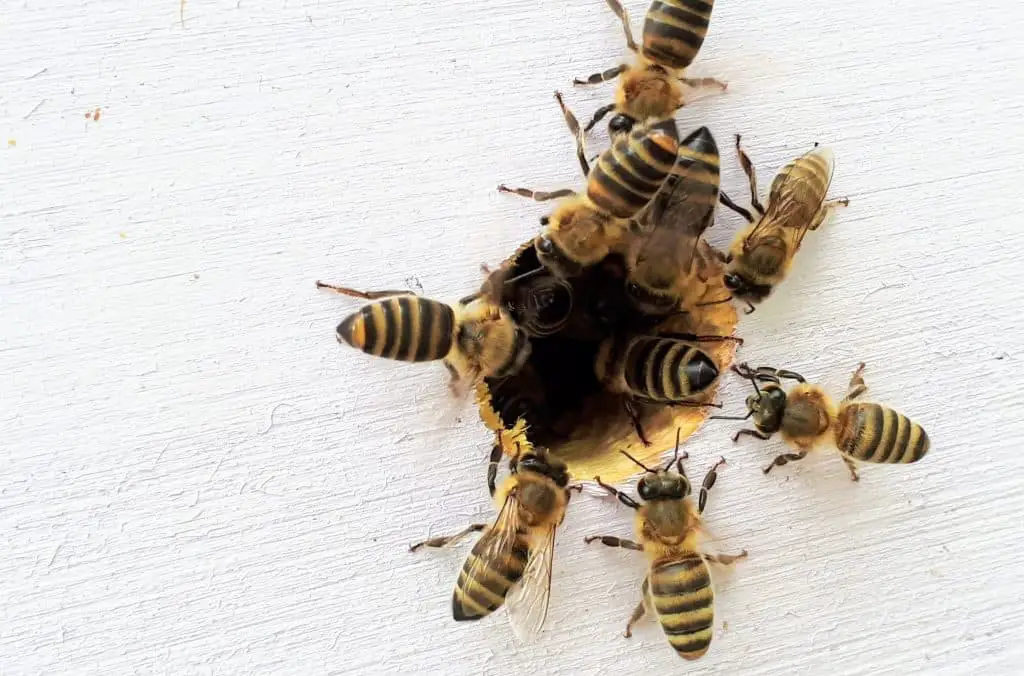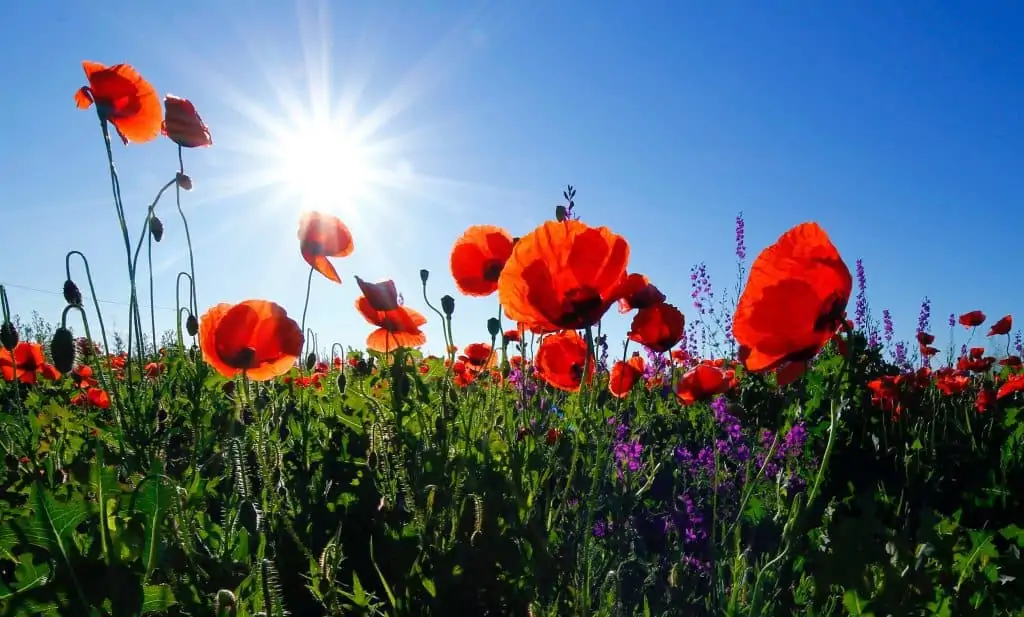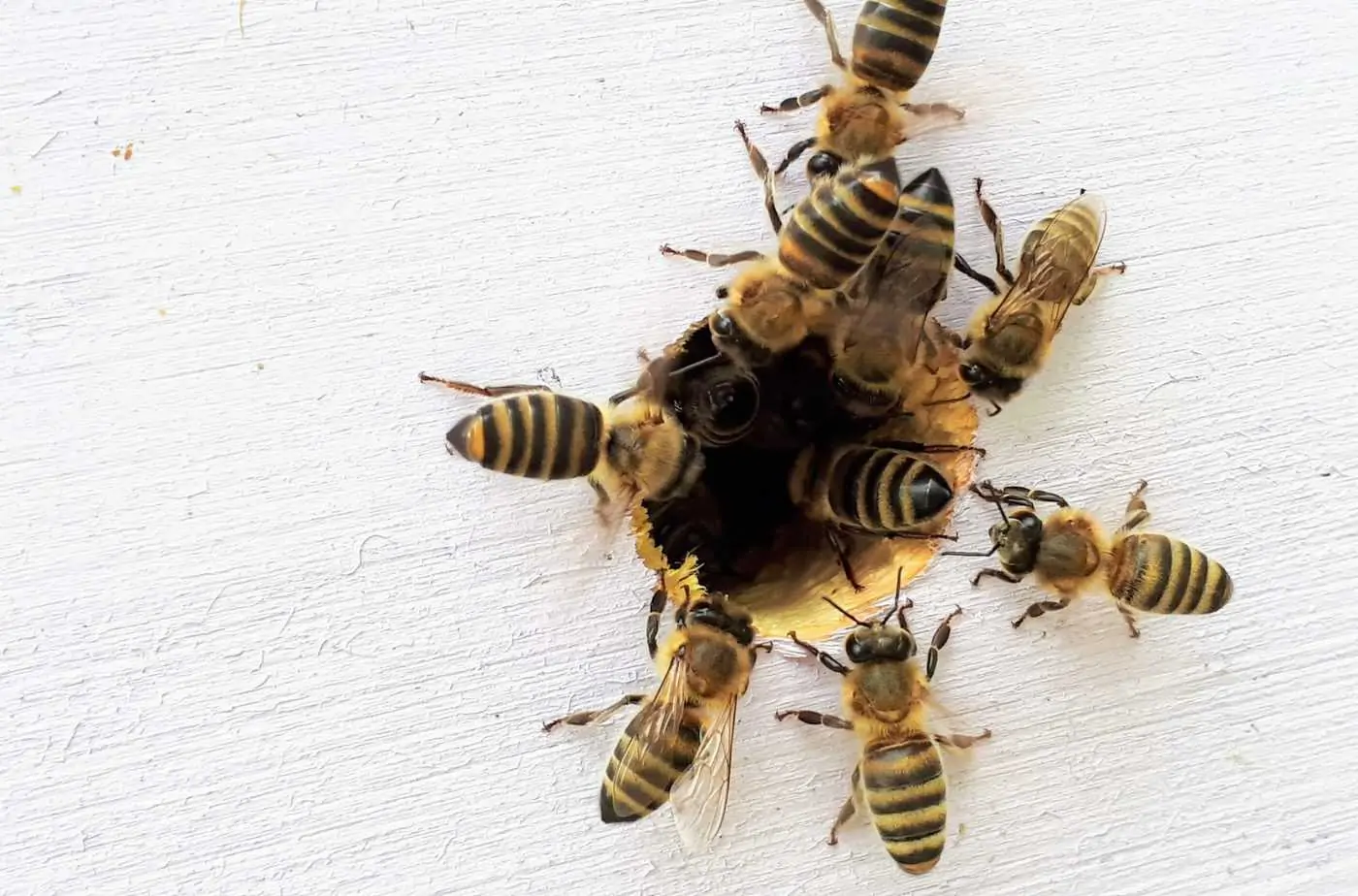Bees might be considered a nuisance for the average person. After all, they pop out from nowhere and feel like a threat, regardless of how safe they might be in reality. However, for the average gardener, bees are something to look at very differently. In this ultimate guide to bees, we’ll be taking a look at how they can help your garden, and why they are such an important part of the environment!

Table of Contents
The Ultimate Guide to Bees and Gardening
Bees aren’t just your average insect. They are a working creature! The responsibility that is put on bees is a hefty one, as they are one of the most important pollinators in the world.
Pollination occurs when there is transfer of pollen into a plant, or flower, allowing for fertilisation to occur. The bee will collect nectar and pollen from flowers by using their stamen. This is then carried over to the next plant that they visit, giving fertilisation the possibility of occuring.
Following this pollination, there is a possibility of the development of seeds, giving plants more room to grow. This means that plants rely on bees, among other pollinators, to keep them growing and thriving.
Why Bees Are So Important In Plant Reproduction
Our ultimate guide to bees is a reminder that pollination is a crucial step in the process of plant reproduction, making bees an essential part of your gardening journey.
The first stage of plant reproduction starts with the seed. These seeds contain the DNA required to begin the growth process. Once a seed exists, it will use sun and soil as nutrients to grow, becoming a developing plant. This may be a flower, a vegetable, or any other common plant found in a garden.
Once your seed has developed into a proper flower, you have reached the third stage! These flowers will have a stamen and a pistil. The stamen is the area of the plant that holds pollen, fertilising the pistil. Most plants can’t continue to self pollinate, which is where the bees come in.
The pollination stage, stage four, is when your beloved bees will collect pollen and nectar from the flowers. They spread the pollen from multiple flowers, fertilising them as they collect nectar for their own upkeep purposes.
Now that pollination has occurred, the flowers can begin to grow fruit, vegetables, or more flowers, depending on the seed. This maximises their potential for success in the upcoming year.
While pollination is crucial for gardening purposes, it also helps wild plants continue to grow. This helps the environment create more greenery, while also giving wild animals food. None of this can happen without knowing more about the ultimate guide to bees, as they are the core of all of these processes.
Why Are Bees Important Beyond Pollination?
Bees are far more important beyond the reasons of pollination. They also create honey, an important food source. Honey is harvested all around the world to be used as food and in some kinds of medicine. This honey is also used as a nutrient by various wildlife, such as racoons and insects.
Since bees are able to help facilitate the growth of plants, they are also responsible for many wildlife habitats. Willows and poplars are just two types of trees that rely on the bee to grow. These trees serve as habitats for thousands of animals and insects, giving them the resources that are needed for survival.

The Ultimate Guide to Bees Staying In Your Garden
So, now you know just how important the bee is! But how do you get them to come to your garden? And, more importantly, how do you get them to keep coming back?
The most basic step is creating a garden that will attract your bees. The most attractive plants and flowers are ones with open or flat surfaces, giving way for more pollen and nectar.
Bees, like humans, come in all shapes and sizes. There are various species of bees out there, and some prefer different flowers. So, be sure to have different types of flowers. This will benefit the bees, boost your chance of pollination, and make your garden even more pretty!
Another simple step is to fill your garden with bright colours when it comes to fruits, vegetables, and flowers. These sights will lure them in and make your garden look more appealing.
These flowers should be organised in ways that put them in clumps. This will make it more easy for the bees to pollinate, and also keep them lured in. So, rather than have random bunches of flowers throughout your garden, you’ll want larger clumps throughout.
You should also avoid using any pesticides in your garden. Should one be absolutely crucial, you’ll want to use ones with minimal levels of toxicity.
Finally, the set-up of your garden will be important when bringing in the bees. They need some protection from windy days, as this can threaten their ability to pollinate. Some light fencing around your flowers may do the trick. They will also prefer sunny spots, so try not to keep your flowers in the shade.
Similar Posts:
- 11 Incredible Ways How Gardening Benefits Your Health
- 10 Common Garden Pests: How to Get Rid of Them and Have a Healthy, Thriving Garden
- 10 Creative Garden Design Ideas to Transform Your Outdoor Space
- 12 Creative Front Garden Ideas that Will Transform Your Home
- The Ultimate Guide to Mulching and Why Your Garden Will Thank you for It
Unfortunately, bees face a lot of risks. Their populations are dying at an alarming rate in various countries. This is due to various factors, including habitat loss, climate change, and the use of pesticides. So, it’s important to remember just how important these friendly little flyers are to us and to our gardens!
Remember to keep your garden looking bright, sunny, and colourful. This will encourage bees to come to visit, while also boosting your odds of having a healthy and beautiful garden! Our ultimate guide to bees is here as a reminder to not ignore the importance of bees.

